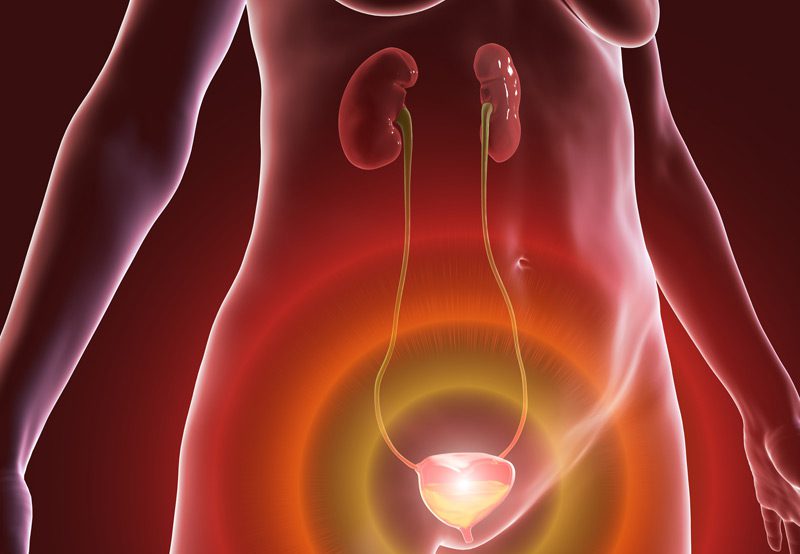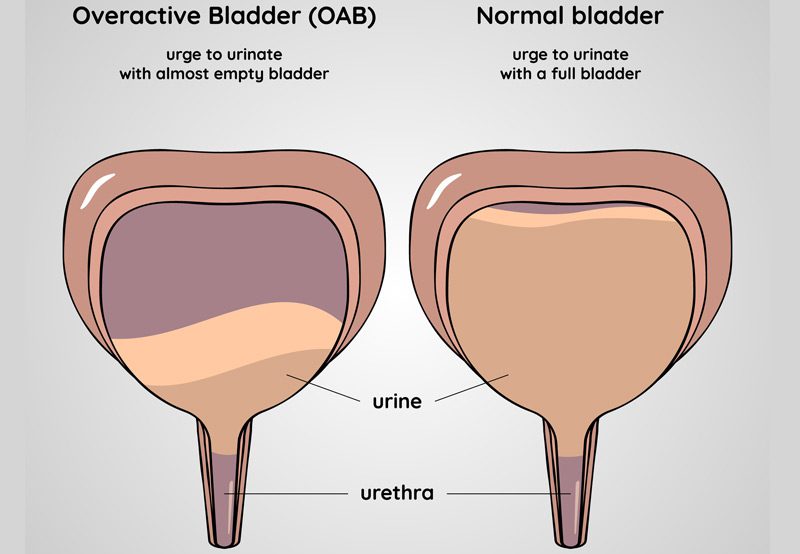

Overactive bladder is a condition characterized by a sudden, powerful urge to urinate. Individuals may struggle to overcome the urge, leading to accidents and incontinence.
Another symptom of an overactive bladder is frequent urination, especially at night. Severe cases of an overactive bladder may require individuals to urinate every 20 minutes and cause multiple accidents every day. An estimated 16% of people suffer from an overactive bladder.
What Causes an Overactive Bladder?
The condition may be caused by involuntary contraction of the muscles that empty the bladder even when the bladder is not full. The risk of an overactive bladder increases with age, but the condition is not a normal aspect of aging. In many cases, the exact cause of the condition is unknown; in other cases, an overactive bladder may be linked to obesity, excessive fluid consumption, diabetes, the use of diuretics, or cognitive impairment due to Alzheimer’s disease or stroke.

Risk Factors for Overactive Bladder
The following factors increase the risk of experiencing an overactive bladder:
- Neurologic disorders or damage to the signals between the brain and bladder
- Hormone changes
- Diseases that affect the brain or spinal cord, such as multiple sclerosis and stroke
- Pelvic muscle weakness or spasms
- Urinary tract infection
- Side effects from a medication
What to Expect During Diagnosis
Individuals experiencing symptoms of an overactive bladder should schedule an appointment with their primary care physician. During the appointment, the physician will evaluate the patient’s symptoms, review their medical history, and conduct a medical exam. Some patients may be referred to a urologist for diagnosis and treatment.
Medical History: The urologist will ask questions about the patient’s health history and lifestyle. The patient will be asked to discuss their symptoms — when they first started, how they’ve progressed, and how they’re affecting daily life. The urologist will also ask the patient about other past and current health concerns, current medications, diet, and liquid consumption during the day and night.
Physical Exam: During the physical exam, the physician will feel the patient’s abdomen, the organs in the pelvis, and the rectum.
Other Tests: To accurately diagnose the condition, physicians may have the patient complete the following tests:
- Urine Test. Patients may need to provide a sample of their urine to test for infection or blood.
- Bladder Scan. This ultrasound test will show how much urine is still in the bladder after the patient goes to the bathroom.
- Additional Tests. Patients may need to undergo a cystoscopy or urodynamic testing. Though they’re not always needed, the results may help the physician see if something else is causing symptoms.
Treatment For Overactive Bladder
Patients diagnosed with an overactive bladder may begin with minimally invasive treatment. Kegel exercises can help strengthen the pelvic floor. Losing weight can also provide relief for some individuals with this condition.
Other patients may benefit from medication, intermittent catheterization, OnabotulinumtoxinA injections, or surgery, depending on the severity of the condition and possible underlying causes.
Patients diagnosed with an overactive bladder should ask an experienced urologist for a personalized treatment plan.
